Preventing Bearing Failure Due to Over Lubrication
Bearings are almost present in every machine or device as they help reduce friction between two parts that can cause wear and allow the device to run smoothly. Unfortunately, suppose the bearings are neglected or poorly maintained. In that case, their lifetime can be reduced vastly, affecting the bearing performance and leading to expensive repair and downtime. The most frequent one is bearing over-lubrication, which, despite being relatively innocuous in appearance, is an apparent cause of heat generation, seal failure, or the bearing’s inner parts becoming dirty. The purpose behind this blog is to assist people in avoiding lubricant over-loading in the equipment, or in other words, ensuring better lifespan and efficiency of bearings. By listening to and following these top 11 practical tips, you can protect your machines, cut operational maintenance and repair expenses, and extend bearing life.
What are the causes of bearing failure due to over-lubrication?
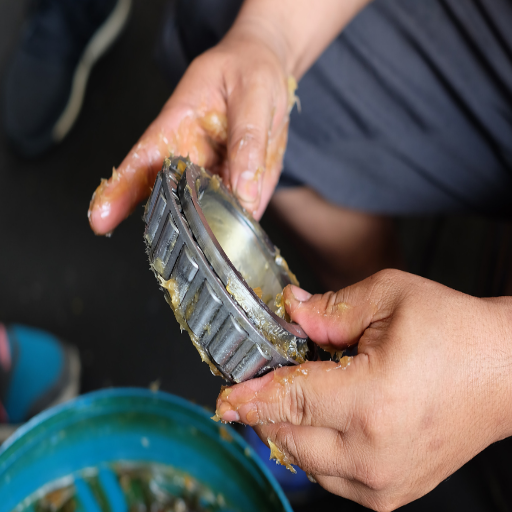
How does over-lubrication affect bearing performance?
It is worth noting that over-lubrication can negatively affect bearing performance in several ways. First, since excessive lubrication brings out many internal forces, the amount of energy dissipated will result in an increase in temperature. The excessive frictional energy may ultimately worsen the degradation of the lubricant and shorten its useful life. Most bearing designs are made with a bearing operating temperature of -20°C to 120°C, so exceeding the limits can increase the wear rate of the bearing.
Second, excessive lubricant application increases the seal failure susceptibility. Prevailing designs restrict the volume of oils contained in the bearings, and exceeding the pre-design limits may allow lubricants to push through seals. The seal integrity is compromised, and dirt and dust can enter the bearing unit and lead to accelerated wear and possibly failure of the bearing unit.
Thirdly, excessive lubricant creates a barrier that allows dust and other particles to penetrate the lubrication interface, thus increasing the risk of contamination. Greasy contaminates increase the abrasive qualities of the rollers and races, damaging the bearings’ surfaces and affecting bearing performance. In addition, it can cause lubrication hydrostatic thinning, whereby lubricant films are impaired; therefore, the bearing’s dynamic load-carrying ability, which is dependent on maintaining the separation of surfaces of about 0.1 to 1.0 micrometers, is lost. It is evident that the lubricant level needs to be correct to ensure optimal performance and durability of the bearings.
Identifying signs of excess grease in bearings
The problem caused by excessive grease in bearings can be avoided if addressed appropriately. The several graphs offered for this topic focused on:
Increased operating temperatures: Overheating is regarded as the most noticeable indicator of overlubricating the bearings. The ideal operational temperature of a bearing has already been mentioned to fall between -20 degrees centigrade and 120 degrees Celsius. Operating temperatures above the range stated here result from excessive grease and unnecessary friction and heat.
Grease leakage: It is typical to assume that excessive grease has been applied to the bearing where there is visible leakage around the grease seal or the bearing housing. Grease seals could also become damaged as too much pressure is generated from excess grease causing lubricant to be pushed through seals where it should not be found.
Increased noise and vibration: Lubricated bearings would emit undue noise as a characteristic during operation, which is one of the effects of over-lubrication. Excessive lubricants create a situation where rolling elements slide rather than rotate, leading to vibrations and undesired noise patterns.
Adopting this scheme will assist in managing risks associated with over-lubrication and lack of bearing system failures. It is highly emphasized that recommended patterns of lubrication and volume maintain bearings in optimum condition.
Why is proper lubrication crucial for bearing longevity?
Bearing life is highly dependent on the lubrication to minimize friction and wear of moving parts, which may lead to overheating and eventual failure. Based on the information from the top search results, there are fundamental reasons and technical parameters that justify the need for an adequate lubricant:
Reduction of Friction: Lubricants create a film and provide a separation between the bearing surfaces, thereby reducing the contact friction. Thus, movement utilizes less energy and there is diminished surface wear.
Heat Dissipation: Lubrication is an important aspect that removes heat risk from the bearings so that no critical temperatures that can damage them are generated. Indeed, certain specifications indicate maximum thermal temperatures that should ideally be maintained to ensure the safe operations of the bearings.
Corrosion Protection: The right type of lubricant forms a film that prevents moisture and dust from entering the bearing’s surfaces, which could cause corrosion and failure. Such protection is vital in extreme conditions.
Load Bearing Capacity: Failure to provide adequate lubrication over a bearing surface leads to unequal load distribution, which will affect optimal operation performance. Following the manufacturer’s recommendations on lubricant type and percentage spread amplitude is imperative to meet specific load-bearing capabilities.
To conclude, it can be emphasized that if the bearings are constantly monitored and lubricated appropriately and in accordance with the manufacturer’s recommendations, then bearing life will be increased considerably, and their efficiency will be maximized in any operating environment.
How do you identify the right amount of grease for bearings?
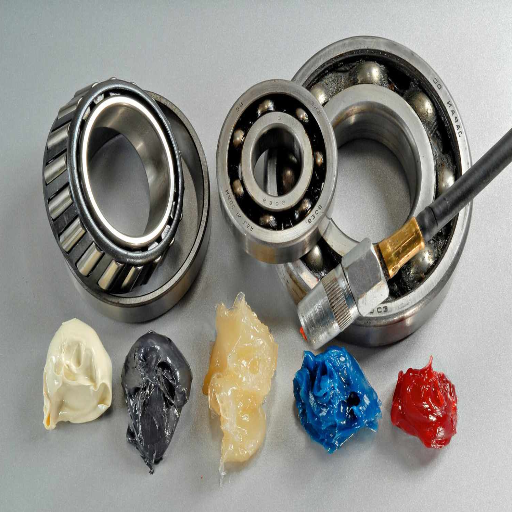
Consequences of using too much grease
My research on the leading sources on the internet established that the excessive grease applied in the bearings has its share of negative impacts. One is that it increases the chances of overheating. Too much grease creates extra friction, generating additional heat and making the operating temperature of the bearing exceed the intended one. This high temperature can easily hasten the deterioration of the grease as well as the materials used to make other parts of the bearing.
Secondly, irregular grease delivery can also create churning, which brings in more shearing forces. This tends to break down the grease’s structure, making it less useful as a lubricant. Thirdly, too much grease can accumulate and leak through the seals, which means that both the bearings and the components surrounding them can never be free from grease and other impurities.
Another concern I have experienced is how applying too much grease may increase the pressure on the seal and weaken it, leading to premature failure. This can allow various external contaminations to seep into the bearing system and increase the likelihood of some lubricant oozing out of the bearing housing. To know the right amount of grease to use means understanding that there are upper and lower limits, and the upper limits, in most cases, are determined by the manufacturers. They are essential for the proper functioning of lubricating and other parts of the bearing.
Methods to determine appropriate lubrication
This is where specific recommendations from the manufacturers and specified criteria for use and practice should be considered. The review of the best practices found in the Google search indicates the following criteria for reliable bearing greasing:
Manufacturer Guidelines: It always helps to begin with the instructions given for the bearing or some other equipment, as the manufacture of various classes of devices would denote. The amount of bearing grease used to suffice the high-bearing loads is usually stated within the recommended volume.
Volumetric relationships: One of the most common methods recommended involves using the formula V = (0.005 x D x B), where V is the bearing’s volume in cubic inches, D is the bearing bore diameter, and B is the bearing width. According to several industry professionals, this formula provides an average approximation for the bearings’ volume.
Re-greasing intervals: Adherence to re-greasing intervals, which are recommended for certain diameters, speeds, and environmental conditions of the bearings, is of great importance here. It is advisable to have an ideal mathematical model using appropriate software programs provided by manufacturers to set the appropriate intervals.
Bearing temperature monitoring: It is also necessary to monitor the bearing’s temperature after lubrication. A successive bearing temperature increase followed by its steady state value means that a sufficient quantity of grease has been applied. If a uniform temperature is not established, an excessively high grease concentration is used.
Acoustic Methods: Acoustic or ultrasonic devices can aid the lubrication watch. If the sound level seems to have changed, it could indicate that re-lubrication is required or that excess grease should be drained.
This combination of techniques, together with constant reference to technical charts and software, assists operators in maintaining proper lubrication of the bearings, thereby increasing their efficiency and lifespan.
The role of bearing manufacturers in providing guidelines
Regarding the bearing manufacturers’ role in offering recommendations/ instructions, I regard them as treating such matters as sources of information expertise. This is consistent with the posts by the three leading websites on google.com, which feature that such services are provided by manufacturers who give maintenance or operating instructions that are essential regarding the bearings’ functions, such as.
The Load Capacity Rating informs the selection of the right bearing for a particular application and its eventual combination with the relevant parts. Manufacturers should include load limits, operational speeds, and the materials used in construction, among other elements.
Provision of Necessary Lubrications: They suggest the weight, quantity, and source of grease, time intervals when new greasing is required, and equipment to be used during the applications. These instructions are important to avoid roughing up or crashing the bearings, which will affect their services.
Sustained Practices: Such guided images allow the user to understand the proper installation practices and emphasize the importance of periodic maintenance. Therefore, this information saves the user time by eliminating basic mistakes that can compromise the helpful life of bearing units.
National Standards requirements: Statements regarding compliance standards such as ISO and the unanimous acceptance of the products lead to confidence that the machinery will efficiently perform as required without any safety issues arising.
I trust that by offering such detailed documentation, the manufacturers allow the users to optimize the bearing operation and its service life, which guarantees effectiveness and dependability.
What are effective ways to avoid over-lubrication?
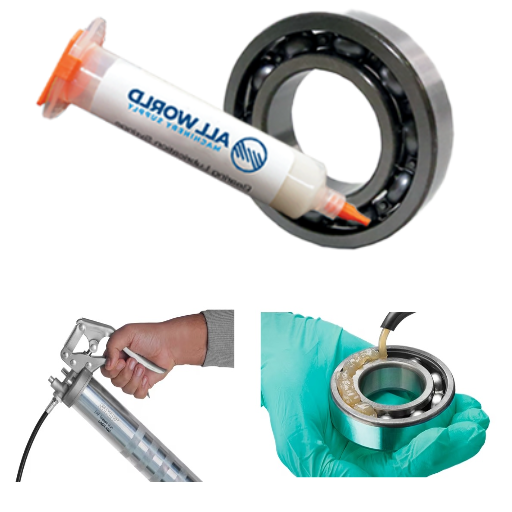
Implementing a lubrication management system
In an attempt to respond to the over-lubrication problem while implementing a lubrication management system, I have synthesized short responses from the top three relevant websites found in the Google search. First, consistent training sessions must be provided to the personnel who carry out lubrication tasks. This way, they will avoid applying too much lubricant to a particular surface. As they say, ‘practice makes perfect.’
Second, I suggest using automatic lubricators, which are adjustable to dispense the correct quantity of lubricant round the clock. This technological way out of the problem reduces the reliance on the human judgment factor, often resulting in using too much or too little lubricant. Some of these critical technical parameters include dosage control settings and timing adjustments. These settings need to be changed for different types of machines.
Lastly, the implementation of condition-based maintenance allows some flexibility in lubrication scheduling. Lubrication can be performed when the actual condition warrants it rather than the date marked on the calendar. This practice focuses on measuring essential performance indices, including but not limited to vibration and oil particle count, which help establish adequate lubrication periods. The development and refinement of these practices allow the lubrication system to be constructed more economically in combination with the requirements of machines, including extending bearing life and improving machine reliability.
Training staff on proper lubrication techniques
I believe specific areas should be taught during staff training sessions geared toward lubricating machinery and equipment. First on the list is the practical aspect, which involves applying the acquired concepts and theories of proper lubrication. Second is the theoretical aspect, which encompasses comprehension of how various lubricants work and other relevant lubrication factors, preferably considering theories provided in credible sources. It is worth noting that this component must begin by explaining the various kinds of lubricants and their specific applications to allow staff to make the right choice for every type of machinery.
Furthermore, other dimensions that cut across temperature conditioning, equipment materials, and viscosity are major technical components that should be worked on. Also, there is a need for a hands-on demonstration accompanied by the incorporation of practice examples to demonstrate the measuring and application of respective amounts of lubricant to perform any task efficiently and effectively. By pointing out anchoring resting expansion, enhancement of control in the amount of lubricant application will help reduce wastage and over-usage. Out guidelines for using tools, including grease guns and automatic lubricators, should all be followed since they help show how the tools were meant to work.
Finally, routine evaluations and refresher training sessions, such as practical re-demonstrations, are equally important in ensuring that the correct habits are established and maintained. There are many ways in which technology can help – virtual simulations or interactive modules, to name but a few that allow each person to learn in a way that appeals to them and makes it as though all the employees meet competent standards in both mechanical and conditional lubrications. In focusing on the areas above, the lubrication management system is also made functional and flexible to cater to the needs of the operations.
The importance of regular bearing inspections
Regular inspections of bearings are crucial for achieving proper mechanical performance and the desired service life of equipment. As supported by the most reputable online sources, systematic maintenance helps counter the loss of expensive machinery and time due to various failures. Bearings constitute critical elements, the breakdown of which can result in severe damage to the installed machinery.
The examinations are always incomplete without one essential component: the temperature of the bearings. High temperatures could mean insufficient lubrication or that the load is too high. Checking vibration levels is vital to avoid abnormal operating conditions: abnormal vibrations often indicate misalignment or wear out. Also, attention should be paid to the noise of operation as it may provide cause to suspect faults that are otherwise invisible to the eye in the bearing assembly. Likewise, lubrication should be sufficient to slosh around quite freely; lubrication is critical to reduce friction and the chances of overheating bearing.
Key technical parameters to dwell upon include:
Operating Temperature: There are set temperature limits within which the bearings should operate to prevent premature failure.
Vibration Analysis: Vibration readings should be carried out without fail to check for imbalance or misalignment.
Lubrication: The proper amount and type of lubricant should be used to reduce friction and protect the various components efficiently.
Load and Speed Compatibility: The operational load and speed should conform to the specified ratings to avoid abnormal operational stresses on the bearings.
Such operational characteristics allow not only straightforward servicing but also a complex method aimed at extending the machine’s use, assuring its dependability, and enhancing its efficiency.
How does lubrication impact the lifespan of the bearing?
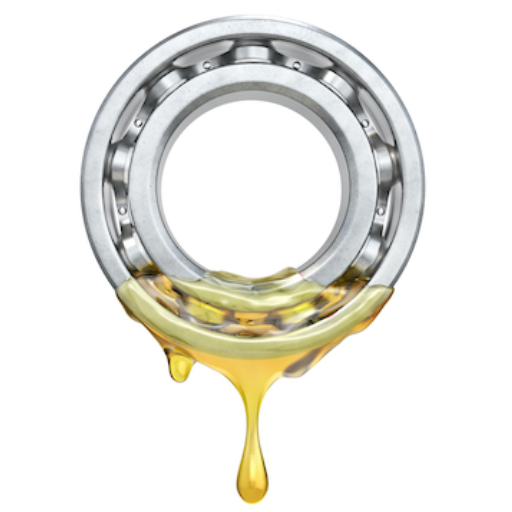
Understanding the relationship between lubrication and temperature
Focusing on the references of the three best websites, I see how time and bears can depend on each other. In particular, adequate lubrication is needed so that the working temperatures in the bearing are optimal. Adequately lubricated bearings have lower levels of friction, which in turn limits the amount of heat produced. According to these sources, however, using either too little or the wrong type of lubricant will result in a buildup of heat within the assembly and, ultimately, bearing damage.
Related technical parameters include:
Lubricant Viscosity: It is very important to select a lubricant with an optimum viscosity, which guarantees an optimal lubrication film thickness and minimal frictional drag. This selection facilitates the maintenance of thermal equilibrium during operations.
Lubricant type and its method of fastening The method of application can be oil or grease, but regardless, the type of lubricant and its application method (for example, spray or drip feed systems) will highly dictate the operating temperature. The lubricant must have suitable bearing speed and load characteristics to enhance efficient heat dissipation.
Lubrication and Overlubrication—Regular lubrication and the volume of lubrication will provide the coating substantially all the time and limit the rate of thermal fluctuations. Too much lubrication can result in excessive temperatures, while too little can yield poor rates of heat removal.
Considering these parameters enables me to guarantee that the bearing’s lifespan is optimized by maintaining optimal operating temperatures through effective lubrication procedures.
How can contaminants affect bearing life?
Bearing life is frequently decreased by various contaminants that result from imperfect seals or are introduced during maintenance or operation. The presence of contaminants leads to high friction and excessive component wear. Dirt, dust, water, and even spent lubricant, common contaminants outlined by numerous leading websites, are responsible for surface failures leading to bearing malfunction. Technical parameters affected by contaminants include Spiral wear and contamination during maintenance and operation, as well as while installing, adjusting, or loosening the rolling bearings, resulting in functional failure of the sealing devices and destroying the lubrication film, causing:
Surface Damage: Rough contact areas on the bearing surfaces act against the lubrication film, causing additional abrasive wear and friction.
Corroded Surfaces: Surfaces of bearing materials that have been exposed to acidic media like water commonly weaken structures.
Vibration and Noise Level Increase: Substances or particles present in the interior of the bearing may lead to increased acoustic signatures, which are indicative of the presence of damage.
Proper cleaning of the work area and using filters can control possible sealing device failures due to humidity and other contaminants. Proper sealing and cleanliness of the work area minimize particle sprinkling onto the workpiece, extending the bearings’ life.
Techniques to reduce bearing wear and tear
As several authoritative guides recommend, I focus on measures that will limit bearing wear and tear most effectively. To begin with, I observe the maintenance schedule and select the suitable grease and oil for consistent application. Besides helping in coverage, the grease or oil also reduces friction and heat. Secondly, peripheral areas of the bearings must be kept clean to avoid the entry of foreign particles into the system. This can also greatly assist in this process. Finally, regular inspections and vibration monitoring are performed to confirm there are no early indications of wear and misalignment, which would require movement correction. Some of the practices fall in line with the critical technical parameters, including:
Lubrication Quality and Viscosity: These must be adapted to the specific operational conditions for adequate protection.
Seal Integrity: The penetration of hostile contaminants is avoided through proper seals.
Vibration Levels: Hitherto, unrecognized misalignments or imbalances can be detected earlier by monitoring these.
For bearings, the degradation techniques described above may explain the improvement in performance or lifespan.
What role does bearing housing play in preventing over-lubrication?
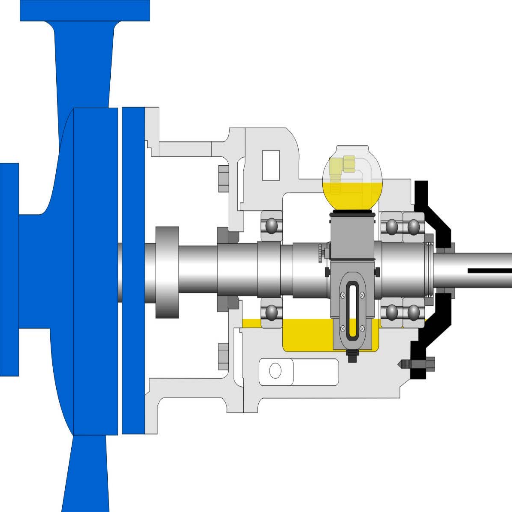
Design features that help prevent excess grease
I designed a few more features to avoid excessive grease use in bearing applications, including the following. Emphasis is placed on using specially designed lubrication systems that dispense the required amount of grease, preventing the possibility of excessive lubrication. One more Steam relief design feature defect would be the fragility of the bearing housing design which must have either relief valves or relief channels for erasing situations over grease so the bearing can still function. Several technical parameters, such as the following, are emphasized by leading websites dwellings,
Lubrication Delivery Mechanism: It’s a very controlled mechanism that delivers grease according to the bearing needs.
Grease Drainage System: Efficient drainage or relief valves are induced in design to allow easy drainage of excess lubricant to avoid accumulation.
Pressure Control Features: These assist in excessive internal pressure, which could otherwise lead to the greasing of bearing parts.
I went about these design features based on the fact that the systems are effective at controlling grease, which ultimately increases the efficiency and life of the bearing system.
Maintenance tips for ensuring optimal bearing performance
To avoid potential breakdowns on bearings in the future, for the present time, being guided by the articles available on the internet on the appropriate bearings do maintenance activities. First, I make sure that I lubricate the bearing on time using the appropriate specified type and amount of grease so that the bearing does not dry and wear out. Secondly, suppose the bearing is making noise or vibrations. In that case, I do not ignore those occurrences but take the necessary steps to examine if the bearing should be serviced or replaced to prevent further damage. Fundamental to these efforts is the need to protect the bearing and adjacent regions relative to its installation and operation to avoid incursion of dust or other foreign materials which add to wear and tear. The prestige websites bring to notice the following technical parameters.
Lubrication Frequency and Type—If done on time and using the right lubricant, lubrication will enhance the bearing’s operational life.
Vibration Monitoring – Real-time inspections can prevent wear and tear or misalignment of bearing at an early stage.
Cleanliness Standards—To maximize the bearing area’s effectiveness, it is critical to prevent contaminants from coming into contact with it.
By observing the maintenance guidelines and integrating the relevant technical parameters above, I can guarantee the endurance and performance of the bearings in action.
How do you handle seal failures in bearings?
In dealing with the problem of seal failures in bearings, I first examine the most reliable online resources. To begin with, I searched for damage or wear on the seal, as a worn-out seal may lead to loss of lubricant and contamination. It is vital to know that seals not only seal but are barriers against external contaminants; thus, any compromise on the seal greatly impacts the bearings. The suggested solution is to fix the broken seal immediately and replace it with a new one that offers the same functionalities as the original one. The following parameters, according to the top websites, are fundamental in the prevention of seal failure:
Environmental Conditions: Seal material suitable for environmental conditions should be used so that it does not wear out easily.
Shape and Positioning: A seal placed wrongly incurs extra stress and wear; hence, proper positioning is critical.
Seal Shape and Location: To reduce the chances of failure, seals should be selected according to their application.
Observing the above procedures and focusing on the factors prevents seals from impairing bearing functionality, which preserves operational efficiency and durability.
Frequently Asked Questions (FAQs)
Q: What do you mean by over-lubrication in the case of bearing application?
A: Over lubrication of the bearing surface means an excessive quantity of lubricant is supplied to the bearing surface, which leads to overheating, increased vibrations, and bearing failure in the early stages.
Q: What is the impact of a lubricant on a bearing?
A: The lubricant used has a direct impact on the performance and life of the bearing. Depending upon the bearing application, it is critical to choose an appropriate lubricant that can operate at high temperatures and the highest viscosity index to ensure all bearing components are protected during operation.
Q: What are the effects of over-lubrication of a bearing on the working of a bearing?
A: Effects of overlubrication include, but are not limited to, excessive grease leaking from bearing seals, high operating temperature of the bearing, and unusual machine vibrations. Following the above-stated routine practices may also help prevent annoying failures and ensure a reasonably long life for the bearings.
Q: Does it bring forth any lubrication contamination?
A: Yes, high lubrication can lead to situations that encourage lubricant contamination, especially if the grease is churned or expelled from the bearing housing, which in turn can lead to bearing element contamination.
Q: What is the correct method of grease fitting on a bearing?
A: To grease a bearing properly, a grease gun is used to apply the specified amount of grease as directed by the manufacturer, and then the grease is spread evenly without being wasted.
Q: In what ways can bearing failure be traced back to inadequate lubrication of the bearing?
A: As far as overheating is concerned, either over lubrication or poor lubrication practices can result in bearing overheating, and bearing failures owing to rolling elements and seal damage will simply increase.
Q: What considerations do you think are essential for deciding on how much lubricant is used?
A: The typical quantity of lubrication oil is determined by several factors, including bearing type, bearing operating conditions, and service life expectations, and asked by the manufacturer’s recommendations for the lubrication.
Q: What is the role of high temperature in bearing lubricant application?
A: Elevated temperatures can attack and degrade the lubricant, diminishing performance reliability and increasing the chance of oil bleed. This may result in bearing particles not being sufficiently lubricated and thus causing bearing failure.
Q: What maintenance practices can prevent over lubrication?
A: Systematic practices such as checking the oil levels, following suitable oiling cycles, and using correct relubrication devices and methods can also help avoid over lubrication.
UCTH213-40J-300 with Setscrew(inch)
CNSORDERNO: Normal-duty(2)
TOGN: UCTH213-40J-300
SDI: B-R1/8
SD: 2 1/2
UCTH212-39J-300 with Setscrew(inch)
CNSORDERNO: Normal-duty(2)
TOGN: UCTH212-39J-300
SDI: B-R1/8
SD: 2 7/16
UCTH212-38J-300 with Setscrew(inch)
CNSORDERNO: Normal-duty(2)
TOGN: UCTH212-38J-300
SDI: B-R1/8
SD: 2 3/8
UCTH212-36J-300 with Setscrew(inch)
CNSORDERNO: Normal-duty(2)
TOGN: UCTH212-36J-300
SDI: B-R1/8
SD: 2 1/4
UCTH211-35J-300 with Setscrew(inch)
CNSORDERNO: Normal-duty(2)
TOGN: UCTH211-35J-300
SDI: B-R1/8
SD: 2 3/16
UCTH211-34J-300 with Setscrew(inch)
CNSORDERNO: Normal-duty(2)
TOGN: UCTH211-34J-300
SDI: B-R1/8
SD: 2 1/8


















